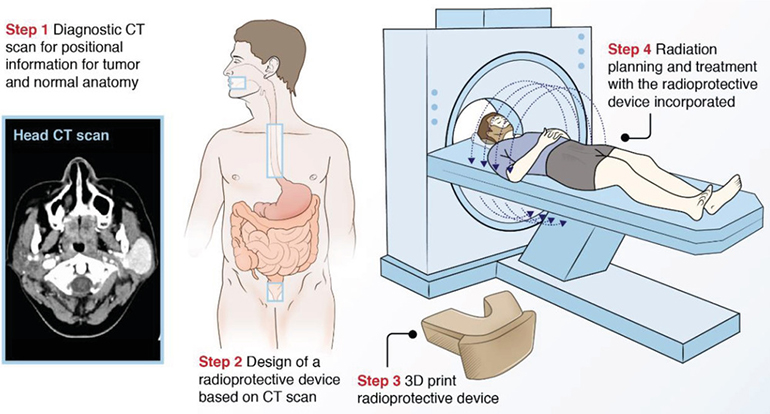
Researchers at Brigham and Women’s Hospital and MIT have developed 3D printed shields to protect the gastrointestinal tract from the side effects of radiotherapy. Using CT scans, the devices can be custom printed to suit each patient’s anatomy. The materials they’re made of contain high atomic number elements that help to shield tissues from gamma and X-rays.
Radiotherapy can be highly effective at targeting tumors and helping to shrink them. However, it can also have significant consequences for nearby healthy tissues. The side effects can be particularly pronounced in the delicate tissues of the mouth and gastrointestinal tract, and range from esophagitis and proctitis to mucositis.
“It’s not uncommon for gastroenterologists to be called in to consult on a case to support a patient who is experiencing side effects of radiation in the esophagus, small intestine or anywhere else in the gastrointestinal tract,” said C. Giovanni Traverso, a researcher involved in the project, via a press release.
“When we treat patients with radiation, we do our best to minimize the area of healthy tissue that receives radiation and break up treatment into small doses, but it’s a fine balance. We want to administer the most dose we can to shrink the tumor without causing damage to healthy tissue,” added James Byrne, another researcher involved in the study. “Our goal through this project was to find an innovative solution that could offer personalized protection for patients.”
The team tested a variety of materials for their suitability as a radiation shield – the materials needed to be 3D printable and also needed to contain high atomic number materials that help to block gamma and X-rays that cause tissue damage during radiotherapy. Interestingly, the shields can be custom made for each patient, based on CT scans.

After printing, the shield materials need to be placed in the body in areas where they can provide maximal protection. So far, the researchers have tested their devices in pigs and rats, and found that the shields can protect healthy tissue when placed in the rectum and mouth.
The researchers have also simulated how the devices would work in humans, and have estimated that they would reduce radiation exposure in the mouth by up to 30% in head and neck cancer patients, and by up to 15% in the gastrointestinal tract in prostate cancer patients.
Check out this video explaining some of the details of the technology:
Study in journal Advanced Science: Personalized Radiation Attenuating Materials for Gastrointestinal Mucosal Protection
Via: Brigham and Women’s
